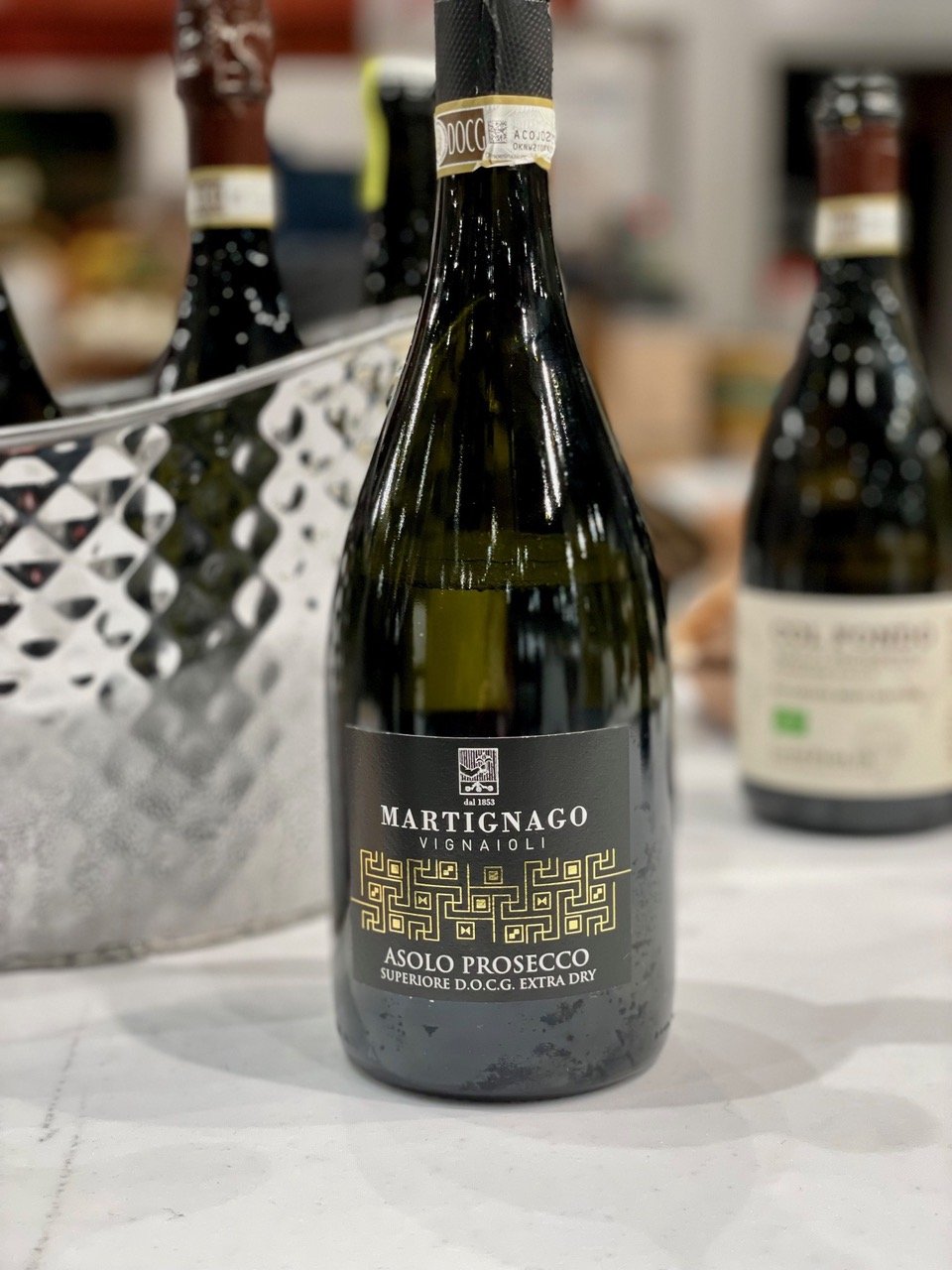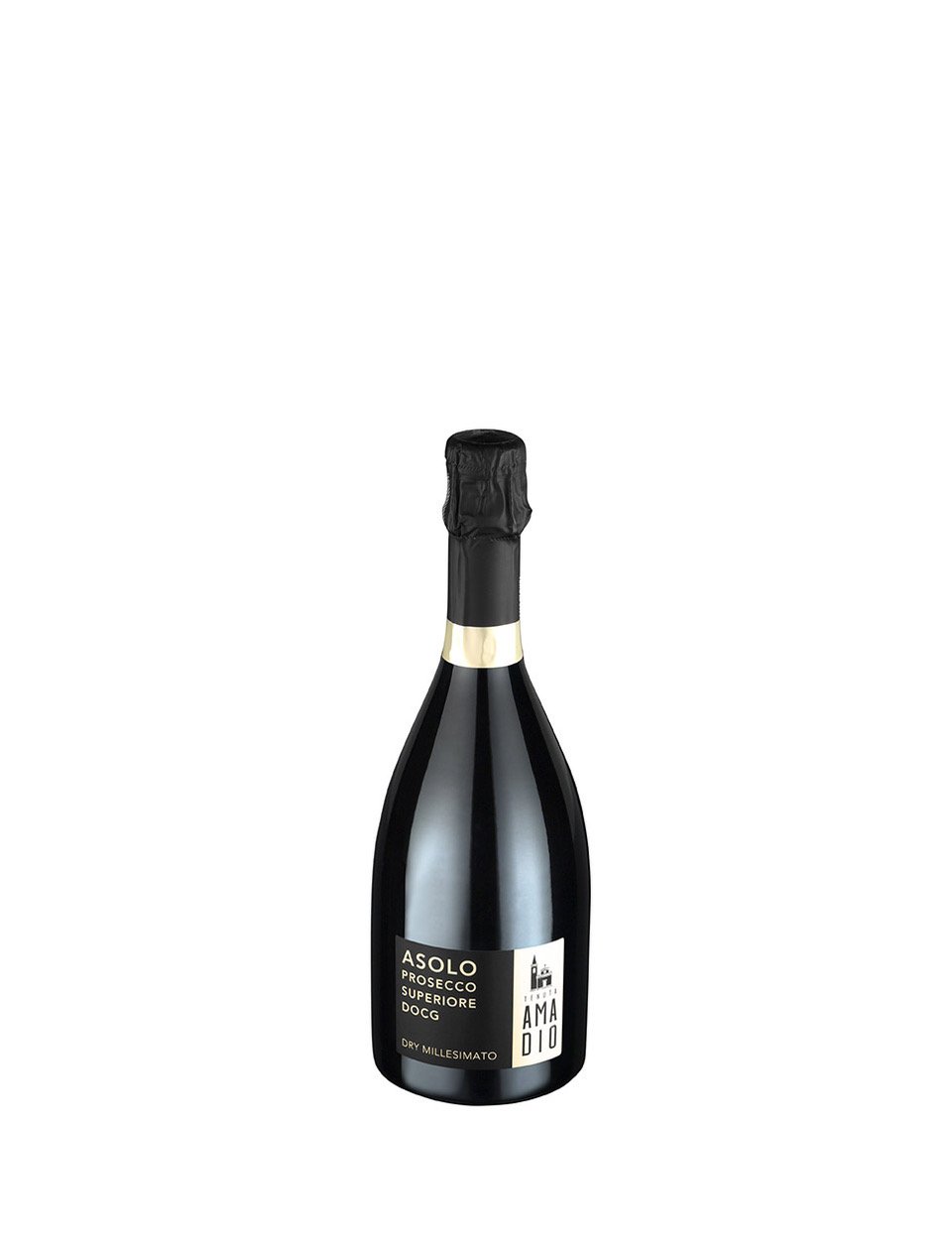4 Top Prosecco Producers You Should Know from Asolo
Asolo hills
Asolo Prosecco takes its name from the medieval village of Asolo in the region of Veneto. Overlooking a landscape of vineyards that cling dramatically to the hillsides, Asolo is registered as one of Italy’s most beautiful villages. Once part of the Venetian Republic, Asolo became known for the elegant wines produced in the hamlets hidden in the Asolo hills. The quality was deemed to be better than any other in the area—and, as such, was taxed at a higher rate.
Today, the Montello Asolo Prosecco Denomination is one of the gems of the Veneto, producing aromatic and refined examples of Italy’s most popular wine. The poet Giosue Carducci called Asolo “the Pearl of Treviso.”
Winemakers and farmers in Asolo adhere to a deep tradition of farming sustainably, organically, and respectfully. This includes protecting ancient grape varieties and harvesting by hand to produce a wine that represents the ancient beauty of the village and hills of Asolo.
An extraordinary wine from an extraordinary landscape
Asolo Prosecco Estate courtesy of Asolo Prosecco
The vineyards are located in the wickedly steep hills around Asolo. This landscape has led poets and writers to refer to Asolo as the City of One Hundred Horizons.
The Colli Asolani is the name for the hilly area where Asolo Prosecco is made. Asolo is located in the western part of this area and the view to the east looks toward Monte Grappa, the Montello Hills, and the Piave River. The maximum height is 450 meters, or 1500 feet.
The finest vineyard sites are on sunny south-facing slopes. But the Asolo Prosecco DOCG production area is small—vineyards make up only six percent of the total area. Forests cover twenty-nine percent. Additionally, fruit trees and vegetables are grown in the area.
Among the 462 growers, only 21,000,000 bottles are produced. 70% are for export, mainly to the United States. Asolo gained DOCG (Denomination of Controlled and Guaranteed Origin) status in 2009 due to the distinct characteristics of the wine, its link with the village of Asolo, and the local growers’ protection and care for the land.
Asolo courtesy of Asolo Prosecco
Glera is cultivated to produce prosecco. Indigenous to the Province of Treviso, it is believed that glera has grown here since Roman times, but became more established during the period of the Republic of Venice.
What makes Asolo prosecco different? First, there is a natural salinity that is immediately identifiable as Asolo Prosecco DOCG. Also, the addition of historic autochthonous varieties blended with glera, can make up to 15% of the blend of Asolo Prosecco.
Autochthonous grapes that can be blended with glera include bianchetta trevigiana, verdiso, perera, and glera lunga. Many of these old varieties have been cultivated and recorded as far back as the 16th century.
How is Prosecco made?
Prosecco is a sparkling wine that utilizes the Chamat Method (also known as the tank or Martinotti Method) to produce a second fermentation in the tank or autoclave. The second fermentation in the tank preserves the fresh and fruity flavors of the glera grape.
The Asolo Prosecco DOCG wines are produced from grapes grown exclusively in 18 municipalities around Asolo. DOCG Asolo Prosecco can be dry, extra dry, brut, or extra brut. The highest percentage of wines produced are either extra brut or brut. All wines that are fully sparkling or spumante are in the superiore category. In 2014, Asolo became the first prosecco to make the extra brut style.
Many producers are also dedicated to Col Fondo, a frizzante wine made in the ancestral method using only native yeasts and creating the second fermentation in the bottle. Seventeen producers founded an association called Col Fondo Agricolo. Col Fondo can be made with 70% glera and 30% ancient grapes, such as perera, verdiso, bianchetta, boschera, and rabbiosa. It is sealed with a crown cap; the label of each vintage should be a different color.
However, col fondo frizzante is not within the Asolo Prosecco denomination; therefore it is not a DOCG wine.
Asolo Producers & Bottles to Try
Asolo Prosecco Superiore DOCG is perfect as an apertivo or throughout a meal. It has a floral and fruity nose and a surprising salinity that defines Asolo Prosecco. It is lively, well-balanced, and crisp, with excellent acidity.
Though most people have not heard of Asolo Prosecco, the word is finally out regarding the quality and elegance of Asolo Prosecco. More wines are being exported to the United States.
Here are four Asolo Prosecco producers you can easily find stateside:
Bele Casel
Bele Casel
Bele Casel a third-generation, family-owned and -operated winery that takes great pride in producing a wine uniquely expressive of Asolo’s beauty.
The winery was started by winemaker Danilo Ferraro’s father-in-law forty years ago. The business now includes the third generation: daughter Paola and son Luca. Paola recalls the stories of her parents and grandparents making wine in the living room of their home.
Bele Casel is twelve hectares of organic vineyards located in the hills of Asolo in the municipalities of Monfumo, Cornuda, and Maser. Monfumo in particular is a pristine and biologically diverse landscape. The Ferraro family notes that they are dedicated to the “desire to make great wines.”
Bottle to try: The first wine produced by Bele Casel was the Col Fondo Agricolo Coli Treviigani IGT. It is a blend of glera, perera, and bianchetta trevigiana. The color is straw yellow and cloudy because the lees are not disgorged. It is light and earthy with lively bubbles.
Another bottle to try is the Bele Casel Asolo Prosecco Superiore DOCG Extra Brut. This is a beautiful expression of the glera grape. Scents of yellow apple, peach, and tropical fruit. On the palate, the finish is refreshing and contains the memorable minerality of Asolo.
Martignago
Martignano vineyards are located in the Asolo foothills in the town of Maser. This is a small family winery with nine hectares of vineyards, which they are converting to organic.
If you visit the winery, you will learn how prosecco is made and how to taste the nuances of the various wines, from extra brut to dry. Martignago emphasizes that their prosecco is savory or salty, and expresses the terroir of the Maser area.
Extend your stay by booking a holiday at their agriturismo in Maser next to the winery. E-bikes are available, and they offer a variety of packages for various holidays. This could be the perfect well-being holiday with walks in the hills, visits to art museums, and bike rides to nearby villages.
Bottle to try: Asolo Prosecco Superiore DOCG Extra Brut Without Sugars. This wine will pair with a wide variety of foods, as it is bone dry and the flavors of the glera grape plus the minerality are not obscured.
Tenuta Amadio
Tenuta Amadio
Tenuta Amadio has been in the Rech family for over two hundred years, but the estate was neglected for a period of time. Currently, Silvia and Simone Rech have resurrected the property and are farming twelve hectares of grapes on three vineyard sites in the Monfumo hills.
Careful attention to preserving the integrity of the environment is carried out in the winemaking processes. Everything is hand-picked and processed immediately to ensure a wine that is full of flavor and freshness.
The tasting room is built to allow maximum natural light, and utilizes local stone and wood in the design. It is almost hidden in the hillside, a design which is in keeping with the Rechs’ approach to farming and winemaking.
Tastings are available in five languages: Italian, German, English, French, and Russian.
Bottle to try: Asolo Prosecco Superiore DOCG Dry Millesimato. Made with 100% glera grapes, this is a sweet wine with gorgeous aromas of yellow peach, golden apple, tropical fruit, and flowers. It has persistent bubbles and a very fresh taste. This wine is best drunk young.
Giusti extra brut
Giusti Wines was established in 2000 in the town of Nervesa della Battaglia. Beginning with a small vineyard, Giusti is now 125 hectares encompassing ten vineyard estates. In 2020, a state-of-the-art winery and tasting room opened to the public.
Italian-born with business enterprises in Canada, Ermenegildo Giusti—entrepreneur, founder, and owner—explained that he wanted to give something back to his ancestral home while safeguarding the environment.
With considerable financial resources at his disposal, he has made substantial investments not only in vineyards but in sustainability and recovery of the environment, as well as the restoration of historical and cultural monuments. In particular, the Benedictine Abbey Sant’Eustachio is now restored and open to the public.
“The well-being of the environment is an essential priority,” explains Ermenegildo Giusti. “We have been managing our vineyards with care and attention to sustainability since the beginning, in order to preserve the ecosystem and guarantee quality and balance with the environment.”
Giusti Wine was certified in 2019 with the SQNPI (Sistema di Qualità Nazionale Produzione Integrata) by the Ministry of Agricultural Policies, confirming the quality of the grapes and the sustainability and virtue of the winemaking process.
In 2020, Giusti Wine started a collaboration with internationally renowned Tuscan enologist Graziana Grassini. This is in line with his goal to make the region and wines of Montello Asolo known worldwide.
Bottle to try: Asolo Prosecco Superiore DOCG Extra Brut. Well-structured, it is made from glera grapes cultivated in the Colli Asolani, where the mineral soils confer unmistakable aromas and flavors on the wines. Lemon, pear, and acacia flowers and the minerality of Montello are evident. It is aged two months on the lees after initial fermentation, and then six months longer in the tank. The extra brut style is the first of Giusti’s collaboration with Graziana Grassini: “With this wine, exclusively produced with grapes from Aria Valentina estates, the enologist promotes the importance of cru, an idea still very little applied to Prosecco”.
Another bottle to try is the Asolo Prosecco Superiore DOCG Brut.








